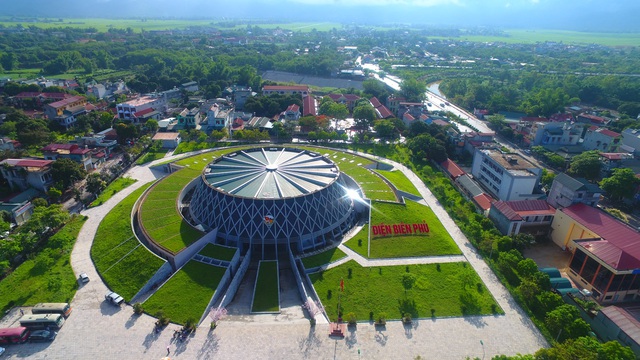
Prime Minister has just approved the Planning of Dien Bien Province for the period 2021 – 2030, with a vision to 2050.
Accordingly, by 2030, Dien Bien will become a fairly developed province in the northern midland and mountainous region; one of the tourism, services, and healthcare centers of the region. Develop agriculture and forestry with modern science and technology application, high productivity and quality combined with processing industry, tourism; the digital economy plays an important role in provincial development; develop a synchronized and modern economic and social infrastructure system.
Specifically, in terms of economy, the economic growth rate in the period of 2021 – 2030 reaches 10.51% per year. Economic structure by 2030, the service sector accounts for about 41.2%; agriculture, forestry and fisheries account for about 12.7%; industry and construction account for about 42.4% (of which industry accounts for about 12.1%).
By 2030, GRDP per capita reaches over 113 million VND at current prices, labor productivity reaches 190 million VND, striving to achieve the state budget revenue of over 5,000 billion VND in the province, and the number of tourists reaches over 2.65 million.
In terms of society, by 2030, the total population of the province will reach 802,253 people; the proportion of trained labor with diplomas and certificates reaches about 55%; reduce the multidimensional access poverty rate below 8%,…
In terms of space and infrastructure, by 2030, the urbanization rate strives to reach over 32% and build Dien Bien Phu City into a green, clean, and civilized urban area, completing the criteria of type II urban. The province has 11 urban areas (including 01 type II urban area, 02 type IV urban areas, and 08 type V urban areas).
By 2030, establish 3 new towns (Muong Nhe town, Thanh Xuong town, and Nam Po town) and 1 new urban area (Ban Phu urban area, Dien Bien district). In addition, the province strives to gradually form 4 urban areas (Muong Nha urban area, Muong Luan urban area, A Pa Chai urban area, and Bung Lao urban area).
By 2050, build Dien Bien province as a relatively developed province of the country, a national historical, cultural, ecological tourism center with international standards; people have high income, good quality of life, and happiness. Preserve and develop the values and cultural identities of ethnic groups in the area, especially the cultural of H’Mong and Thai ethnic groups. Ensuring national defense-security, maintaining sovereignty.
In terms of transportation network, the province will re-plan the existing road system and also build many new roads. In the future, Dien Bien will have the Son La – Dien Bien Highway (CT.03) passing through, with a scale of 4 lanes through the province. The national roads crossing the province include 07 routes QL6, QL4H, QL12, QL279, QL279B, QL279C, QL12D; in which, the direction extends route QL279C, supplements planned route QL12D on the basis of upgrading from provincial roads.
Provincial roads include 26 routes, of which 14 provincial roads maintain their length, 6 provincial roads are adjusted in length, 2 provincial roads (DT145, DT.150) are converted into QL12D, and an additional 6 new provincial roads are planned.
In addition, the province will invest in expanding Dien Bien Airport to reach a scale of 3C level according to the plan; renovate the existing station and build a comprehensive technical infrastructure. In terms of waterways, invest in Dien Bien port cluster with a size of 400-ton ships and a capacity of 1,000T/year including the Lai Chau lake area port with a capacity of 700T/year and other ports with a capacity of 300T/year.












